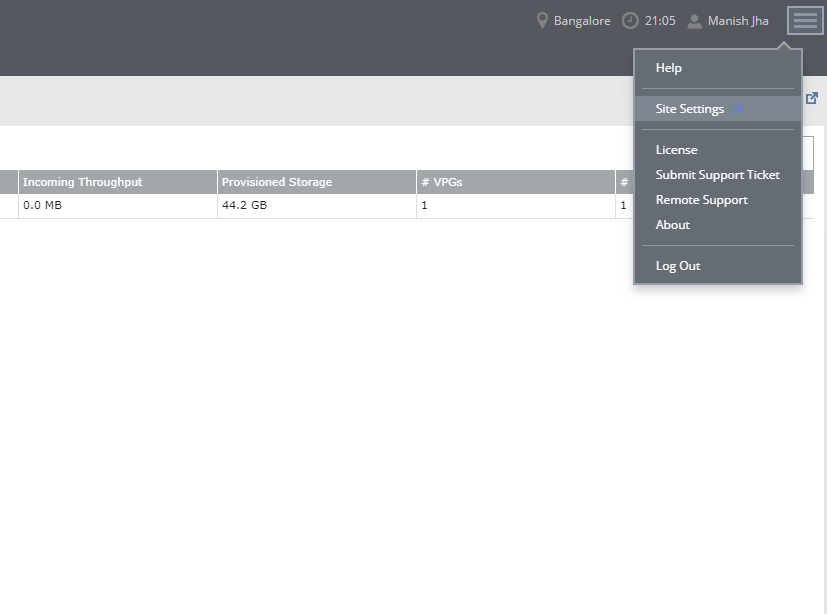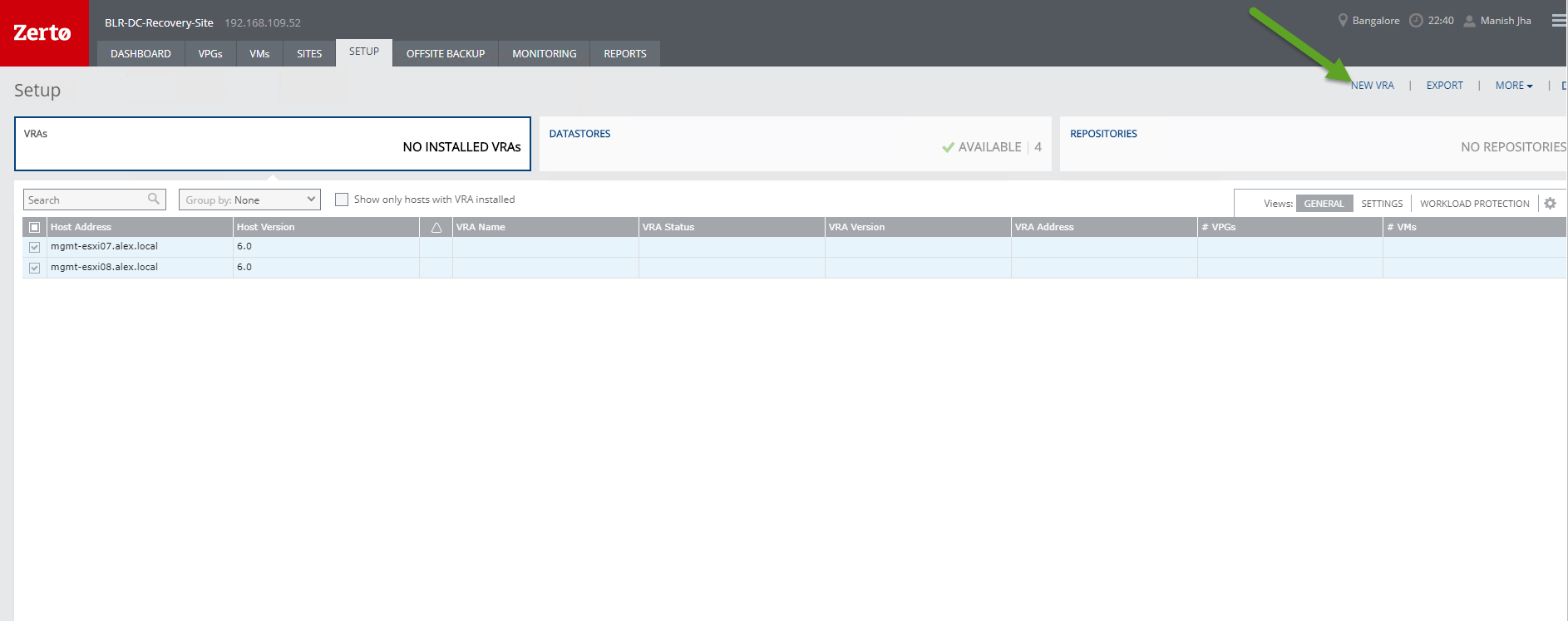In last post of this series we had a look at various dashboards from where we can monitor zerto. Also we learned how to create custom dashboards as per requirement to view very specific details.
In this post we will learn about some advance configuration settings that we can do with zerto. These advance settings are skipped while performing an express install.
If you have landed directly on this page by mistake, then I encourage you to read earlier posts of this series from below links:
1: Zerto Architecture and Components
2: Installing Zerto Virtual Manager
3: Installing Zerto Virtual Replication Appliance
4: Creating Virtual Protection Group
6: Move VPG from Protection Site to Recovery Site
Lets get started.
1: To configure advance settings, login to ZVM interface and from top right corner select “Site Settings”

2: Cloud Settings: If you have a vCloud Director based cloud in your on-prem or if you have a vcloud based cloud subscription, then you can configure the settings here so that you can use zerto to replicate your workloads on a vCD based cloud.… Read More

